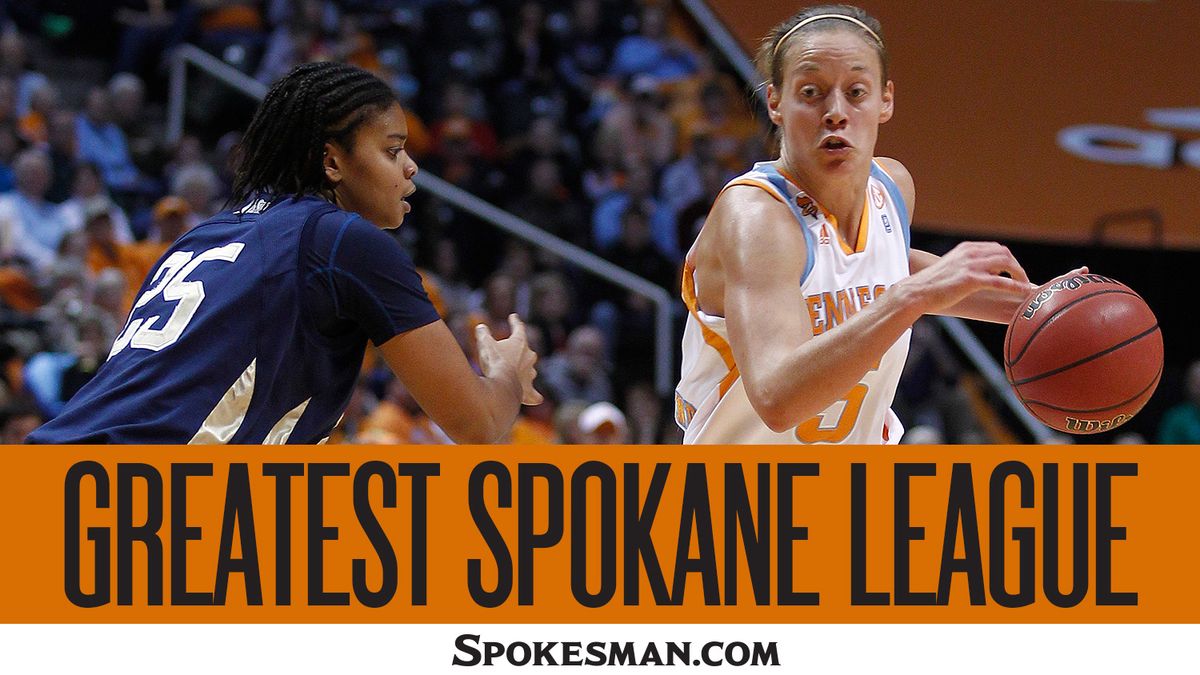Talent on the big stage: Over 45 years, close to 100 Greater Spokane League girls basketball players have signed with Division 1 schools

When former Central Valley stars Lexie and Lacie Hull won the NCAA women’s basketball championship with Stanford last spring it brought back a great memory for Angie Bjorklund.
“The Hull twins are great players,” the former U-Hi star said, emphasizing great. “I never had a chance to follow them (while playing overseas) but winning the NCAA championship is like no other experience and I’m really excited two more Spokane natives got to experience that.”
Playing basketball for Tennessee was Bjorklund’s goal from the time she began dribbling a basketball and the dream came true in 2007 when she started her first game as a freshman for the Lady Vols. The next April she was the first NCAA women’s basketball champion from the Greater Spokane League.
What Bjorklund did overshadowed another amazing GSL milestone.
“I think the year I graduated we had seven girls sign D-I scholarships,” she said. “Just from the 2007 class!”
Nothing less can be expected from a league that has won 18 State titles in a 33-season period and has had a team in the 4A or 3A championship game in 14 of the last 15 seasons. (There was no state tournament last season because of the coronavirus.)
Felice Moore Orrell, who played on the 2001 and 2002 Central Valley state champions and coached the Bears to a title in 2020, said, “Other areas produce amazing athletes but Spokane has produced really great girls basketball players.”
Close to 100 GSL alums have signed with Division I schools in the 45-year history of the league, about two dozen of them with Power 5 programs.
“It’s the water,” Kristin Hepton Spear, a member of Central Valley’s 1993 undefeated state champion joked.
There are many reasons the GSL has had an abundance of talent and each one played a part, except for water.
“I coached at Idaho so I knew there was great basketball in Eastern Washington,” said Stanford Hall of Fame coach Tara Vanderveer, who first signed a GSL player, Mead’s Regan Freuen, in the mid-90s. “What a bonus to get two players that are super special.”
Finding the Hulls wasn’t difficult. The Bears were 88-1 their last three years at CV and were headliners on the Spokane Stars club team, founded by Ron Adams more than 40 years ago.
“We were the first major club team in the area,” said Adams, who also conducts Sunday skills clinics throughout the winter for school-age girls. “Now there are eight or nine, plus about 30 small ones.”
Bjorklund said, “When you have a chance to play with the top players in the GSL and with great coaches all summer you have no choice but to get better. On the flip side, I’m playing against those same players every week. Spokane is just a basketball town.”
And those teams are well coached.
“Basketball is really important in that community,” Oregon coach Kelly Graves, who built Gonzaga into a power before moving on and making the Ducks a Final Four program, said. “Great coaches, look at the list of state championship coaches, it isn’t just one school.”
Central Valley has six titles, Mead and Lewis and Clark four each and Shadle Park and Gonzaga Prep two. And there have been nine runners-up, including two cases of an all-GSL final.
“I’ve seen coaches from all over, I’ve watched practices in every corner of the country, and there are as good of coaches in the Inland Northwest as there are anywhere in in the United States,” Graves said.
“The coaches take the kids they’ve got and succeed,” former Mead and Mt. Spokane coach Jeanne Helfer said, “When you have a run of those great kids, you win. When you don’t, you’re competitive. You always had to bring you A game.
“Iron sharpens iron.”
That was especially true between Mead and CV in the 90s, who combined for an astounding eight top four finishes in four years and 13 in 10 years.
“It was absolutely great for girls basketball,” former CV coach Dale Poffenroth said. “If you went to a Mead-CV game you had to go early to get a seat. … That’s the kind of rivalry you want. You want to beat those people because then you could beat anybody.
“It’s all about competition.”
If a GSL team gets to state odds are it comes back with a trophy. Since 1988 when Shadle Park beat Lewis and Clark in the championship game, 63 GSL state-qualifying teams have trophied, 16 didn’t.
“Maybe horrible weather in the northwest has something to do with it,” Emily Westerberg Love, a two-time state champion at CV, said. “But after leaving and coming back, this region is crazy about sports. Parents are wild about sports. Parents are proactive.”
Spear said, “We were fortunate to have a lot of people, my dad, Ron Adams and Poff, teach good foot work, dribbling, good shooting technique … from an early age. My dad always used to say, ‘If you can’t dribble you can’t play,’ which is so true (and) ‘if you have good footwork you can dominate.’”
CV’s 1993 title capped a GSL string of six-straight championship appearances and five titles. Beginning in 2010 at the 4A level it was seven-straight title game appearances with six championships, the last by CV in 2016.
Helfer pointed to large community events like Bloomsday, Spike ‘n Dig volleyball and Hoopfest for building a sports crazy culture that the success of Gonzaga’s men’s and women’s programs have elevated.
“Our city of Spokane, they love things, community sports events,” she said. “This stuff is generating a kind of attitude that this is what we do. Part of it is we don’t know anything different. There are expectations and everyone wants to be part of it.
“This has been Hooptown USA long before they knew that name.”